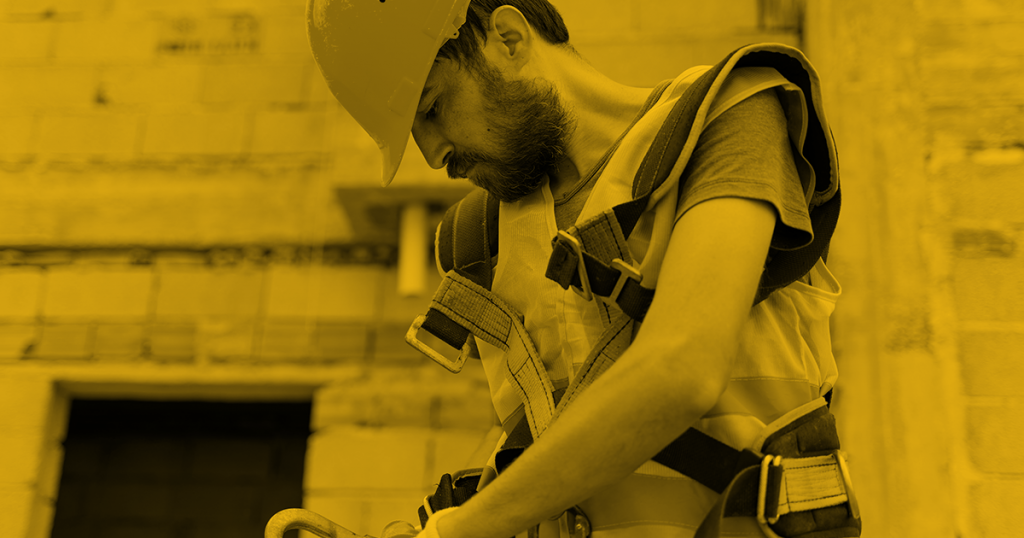What Personal Protective Equipment Do I Need to Work in Construction?
From handling heavy machinery to working from a height, construction workers come into contact with numerous hazards on a daily basis. It’s little wonder that, over the last three years, the annual average of non-fatal injuries in the construction industry has increased to 59, 000. One key way to minimise risk on construction sites is wearing Personal Protective Equipment, commonly referred to as PPE. But what exactly is this and how is it used? Hitchcock & King is here to answer your questions.
What is Personal Protective Equipment (PPE)?
PPE refers to specific clothing worn in the workplace to protect from potential hazards. The type of PPE varies depending on the level of risk in the setting; some workplaces may require substantially more than others. The Personal Protective Equipment at Work Regulations 1992 outlines legislation regarding the provision and use of PPE in the workplace. This establishes that all employers are legally required to provide appropriate PPE in any circumstance that a risk assessment deems necessary. It’s important to consult a local health and safety professional to check what regulations apply to your construction site.

Why is PPE so important in construction?
Construction site PPE is an essential tool for ensuring a safe work environment and – in extreme circumstances – could even be the difference between life and death. It has numerous important benefits, including:
- It prevents injury and offers an extra layer of defence against any occupational hazards.
- It reduces potential costs. Should an accident occur and the employer is found to have not provided PPE, they could be found liable and subject to financial penalties.
- PPE provides peace of mind and ensures employees can go about their work, secure in the knowledge that they have all the necessary protection.
- It ensures legal compliance with regulations.
- PPE protects against long-term conditions. Some health problems can worsen due to repeated exposure; for example, consistent use of loud machinery can cause hearing loss. PPE is an effective preventative measure against a number of these occupational conditions.
What are the different types of PPE used in construction?
A wide range of PPE is recommended for most construction sites and it can be difficult to keep up with what is needed. Here is our essential construction site PPE list:
Head and neck protection – In the construction industry, you’re frequently working with heavy materials – sometimes even from a great height. A hard hat will protect your head and neck from blunt trauma, should any debris be inadvertently dropped.
Ear protection – Many construction sites typically use a lot of power tools that operate at extreme decibels. Hearing loss can occur from consistent exposure, so earplugs and earmuffs are essential for protecting your eardrums.
Eye protection – Typically, there is a lot of dirt and residue around construction sites. Your eyes are extremely sensitive; even a tiny speck of dust could cause permanent damage! Eye protection is therefore crucial and can come in the form of goggles, visors or face shields.
Foot and leg protection – The bones in your feet are incredibly delicate and can be easily injured; that’s why safety shoes are typically mandatory on every construction site. All workers should be wearing steel-toe boots as they protect from blunt trauma, punctures and sharp objects.
Hands and arm protection – You may overlook gloves when thinking about PPE clothing; however, they are vital for protection against cuts, punctures and abrasions. You can also get construction-specific safety gloves which reduce the vibration from power tools and also protect from fire and extreme heat.
Lung protection – Construction workers frequently come into contact with hazardous vapours, gas and dust. Inhalation of these substances can cause respiratory diseases and long-term health issues. Usage of the correct PPE is crucial and most construction sites will require workers to be equipped with a respirator or filtering mask when working in contaminated air.
Full body protection – When working in construction, there may be times when employees are in direct contact with different chemicals and contaminants. In these instances, full body protection may be required. These can vary depending on the task at hand but will usually consist of overalls or a boiler suit made from hi-vis material.
Hitchcock & King are your local construction experts, offering an extensive range of building materials. We have multiple branches across London – including in Hammersmith, Streatham and Fulham – so it’s always easy to pick up your goods in-store. Our team is highly experienced with all the knowledge necessary to advise you on the perfect products for your project.
To place your order or enquire about any of our products, get in touch with our friendly staff today.
